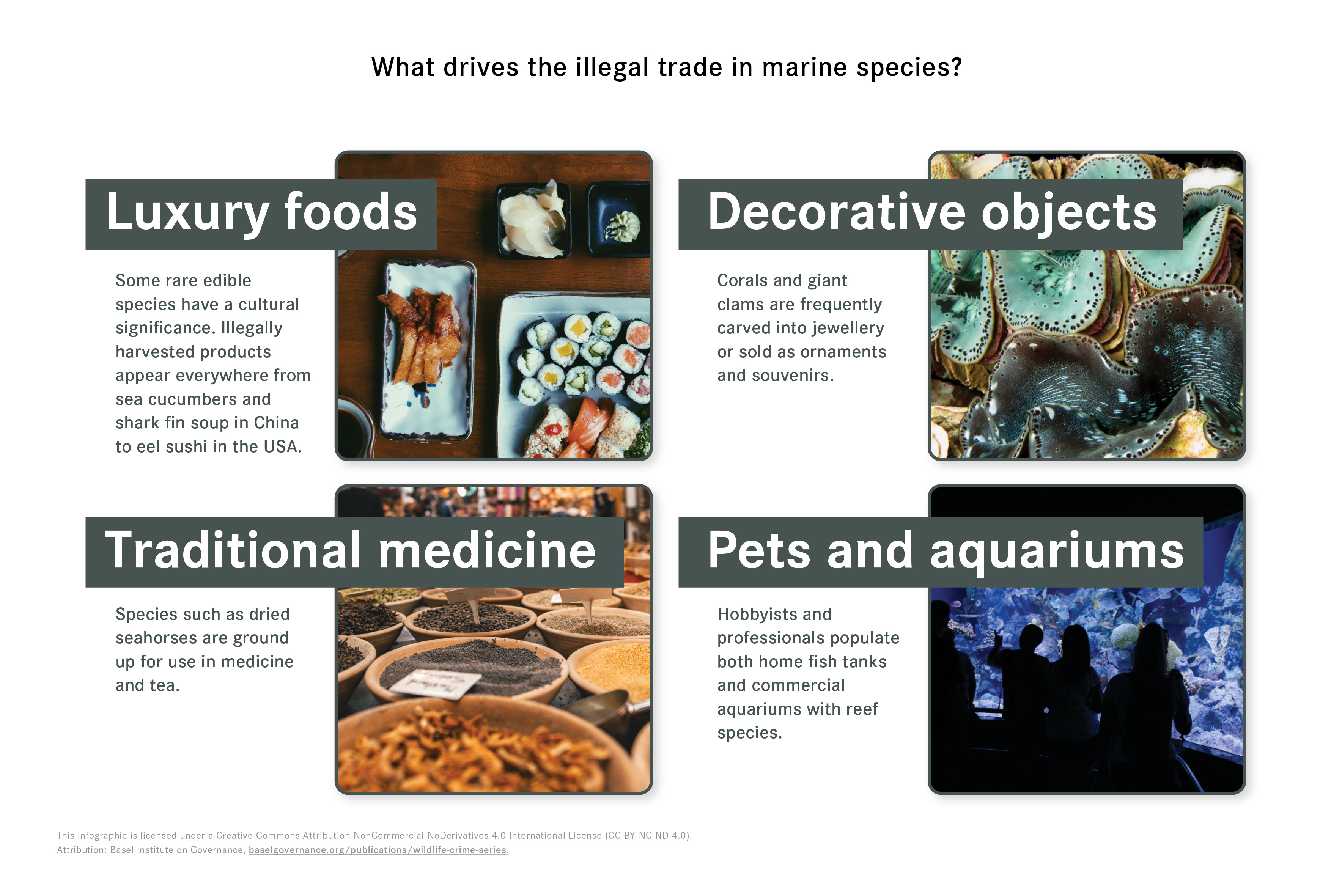Part 4 of the Wildlife crime – understanding risks, avenues for action learning series explores how corruption facilitates marine species trafficking.
2. Introduction to trafficking in marine species
2.5. Infographic: Demand drivers
Marine species are in demand for food, medicine, as jewellery, decorative objects, the pet trade and for zoos and aquariums.
The following infographic gives a brief overview of the main drivers:

- Luxury food. An expansion of the middle class in some countries has resulted in an increase in demand for exotic foods that may signify economic prosperity in the local culture. These include shark fin soup and sea cucumbers, which are eaten both whole and dried. Sea turtles are used both for food and as decoration, through a process to chemically taxidermy the creatures while they are still alive. Trafficked eels have been known to find their way into sushi in North America.
- Traditional Chinese medicine may use species such as dried seahorses for medicine.
- Decorative objects. Corals and giant clams are carved into jewellery, used in decoration or sold live into the aquarium trade.
- Pets and aquariums. Hobbyists and professionals create miniature ecosystems in both home fish tanks and commercial aquariums, populated with reef species.
Demand for some species stretches across each of these categories, stressing populations from multiple angles.